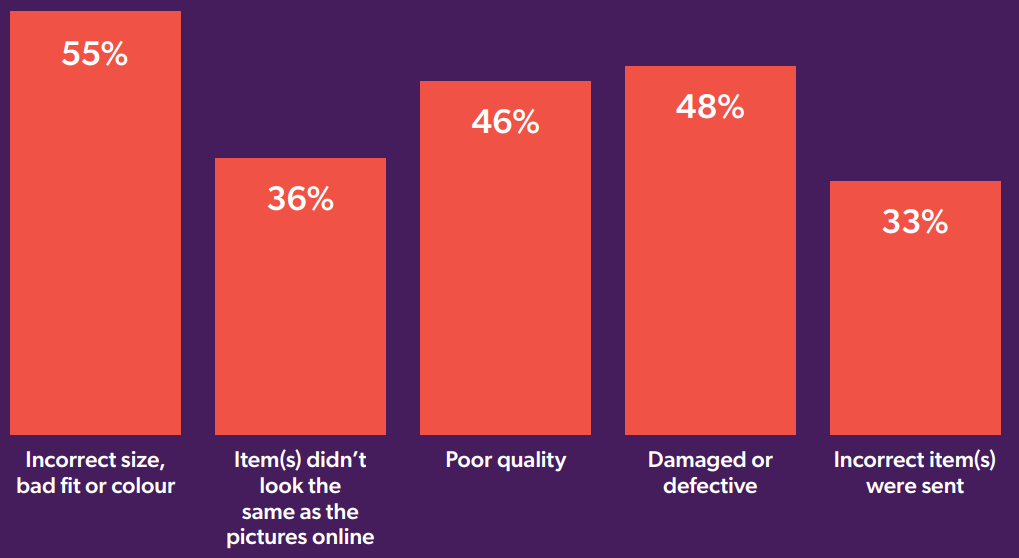As we get closer to the holiday shopping season, retailers are gauging how their brands will fare amidst economic uncertainty. Coveo’s holiday outlook report series has been taking a look at shopper motivators and preferences to help retailers prepare for what’s ahead. In our second and final 2022 holiday outlook report, 2022 Holiday Shopping Report: Habits, Trends and Motivators, we share new consumer survey data findings based on responses from 4,000 U.S. and U.K. consumers. In this piece, we specifically focus on shopper sentiment towards the online realm: top ecommerce product categories, retail website bounce challenges, reasons for returns, and favorite personalization tactics that consumers want as part of their shopping experience.

Top 3 online retail categories
First, let’s take a peek at retail categories that are most popular for online shoppers. In our survey, we asked what retail categories consumers in the U.S. and U.K. plan to continue shopping for online. The top rated category was fashion/apparel with 50% of respondents saying that they plan to continue to shop online for these items. This category was overall more than 10 percentage points ahead of consumer electronics and groceries (39% and 36%, respectively).
Key reasons for the dreaded ‘bounce’
Even the most popular retail sites have their challenges with visitors that leave without ever making a purchase — three of the highest ranking reasons for visitors leaving a retailer’s website were attributed to poor shopping experiences. The primary reason was due to product discovery challenges: 68% of respondents said they couldn’t find the products they were looking for – whether or not the product was buried somewhere on the website or not is unclear, but worth noting that the customer was unsuccessful in discovering the most relevant item for their needs. The next highest ranked reason cited was poor website navigation for the online store, reported by 51%, and a poor mobile shopping experience came in at 32%, just slightly below limited or no product reviews (36%).
Favorite customizations and personalization tools
When spelling out these bounce scenarios, we can’t help but also think about which hyper-personalization strategies can be impactful in improving these challenges. Luckily, in our survey, we also asked our consumer respondents to rank their favorite customizations and personalization tools. We discovered that, first and foremost, shoppers would like to see tailored offers (51%), followed by top reviews and best seller notifications (47%), product recommendations (34%), and virtual try-on tools that guide fit, style, color, and sizing options for online shoppers (22%). Another key motivator worth nothing as we consider customer preferences is whether a brand’s mission aligns with shopper values. For instance, we found that sustainability plays a role in shopping decisions for more than half (52%) of all consumers, yet more than 43% think that sustainability is a brand bonus.

Generational differences
We also found some interesting generational differences and nuances, particularly with younger audiences. For one, GenZers (18-24 year olds) were by far most motivated by sustainability at 64% (vs. 52% average). GenZ shoppers are also nearly 2x more likely to shop with luxury brands online (28% GenZ vs. 15% average among other generations). This is another consideration to evaluate in personalizing the customer journey.
What’s a holiday peak without returns?
With apparel making 50% of respondents’ shopping lists now and beyond, it makes sense that the top cited reason for returns is ill-fitting items at 55%. Though also interesting is that 46% of respondents said that poor quality prompted their return.

Hopefully, our latest report will help retailers better understand customer motivations when it comes to online retail, and adjust strategies accordingly. Combining these tactics will enable brands to guide shoppers to the products they really want, reducing the potential for returns, which continues to plague retailers and threatens their profitability by cutting into profit margins.



